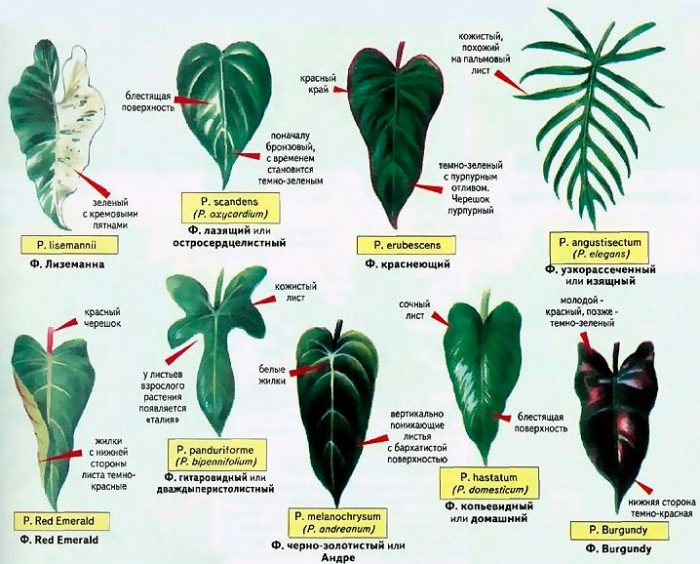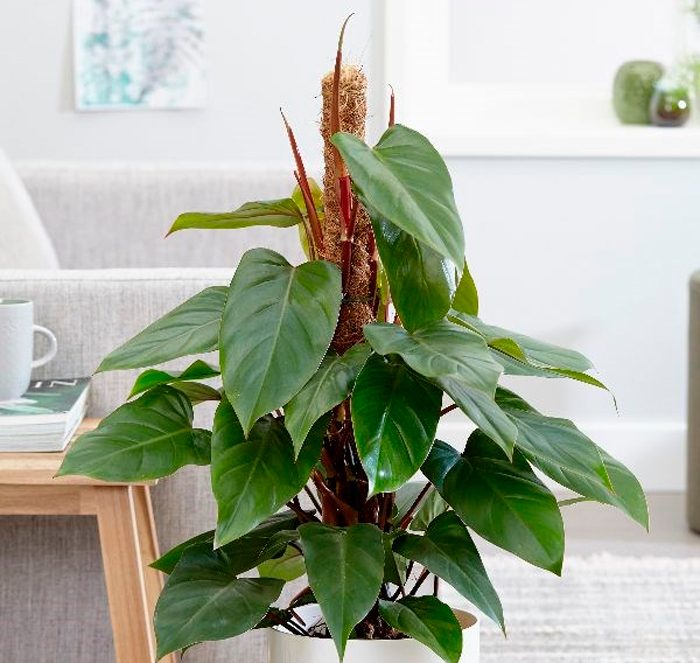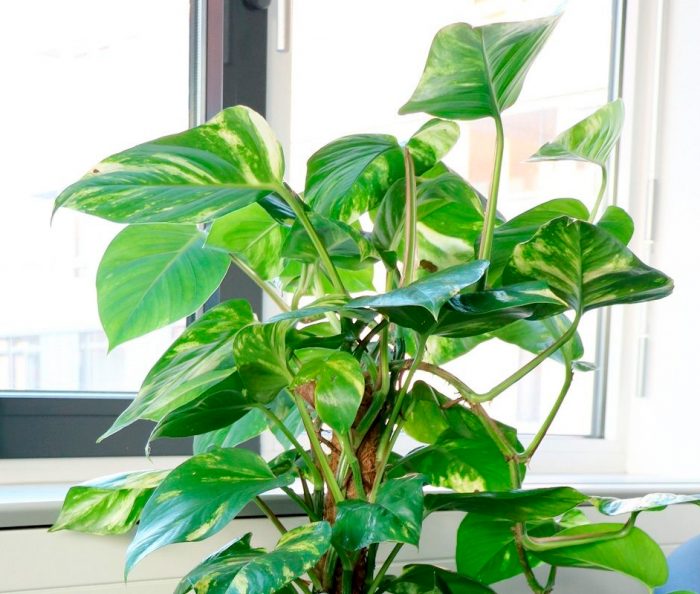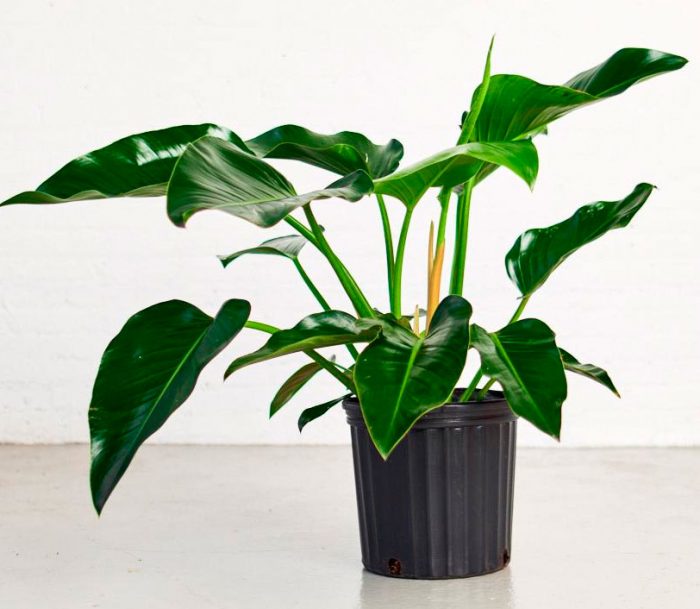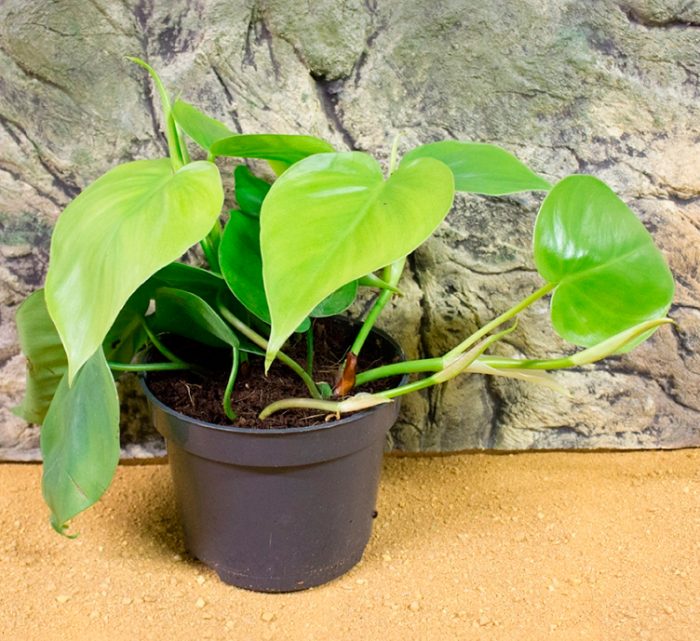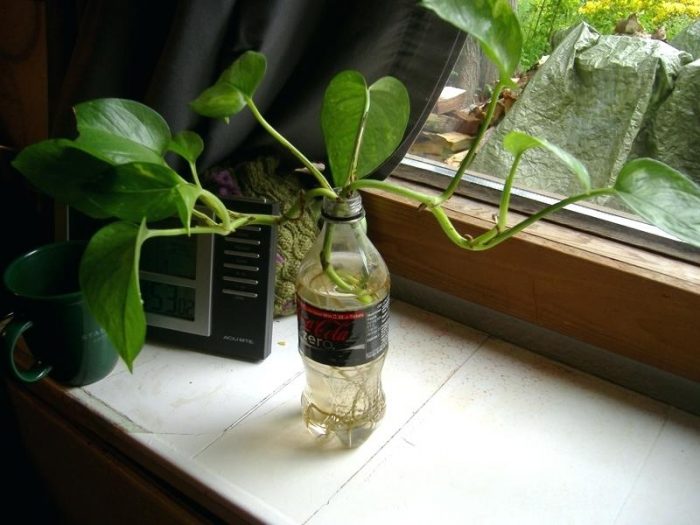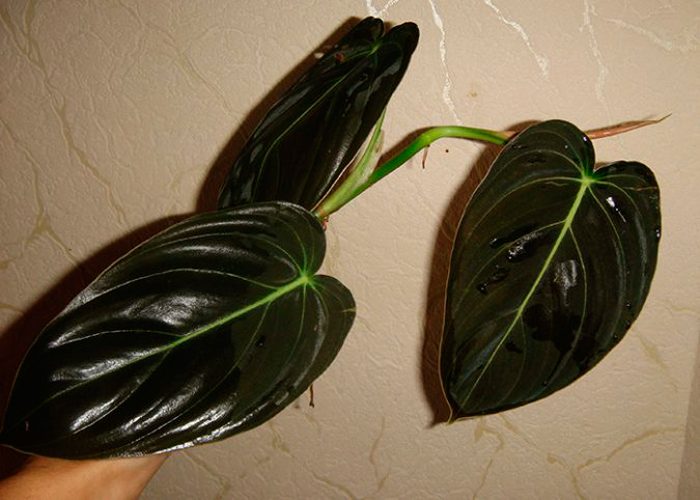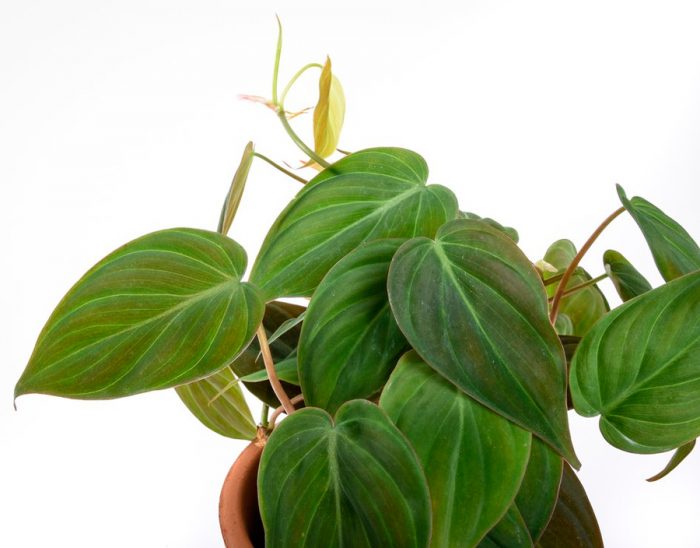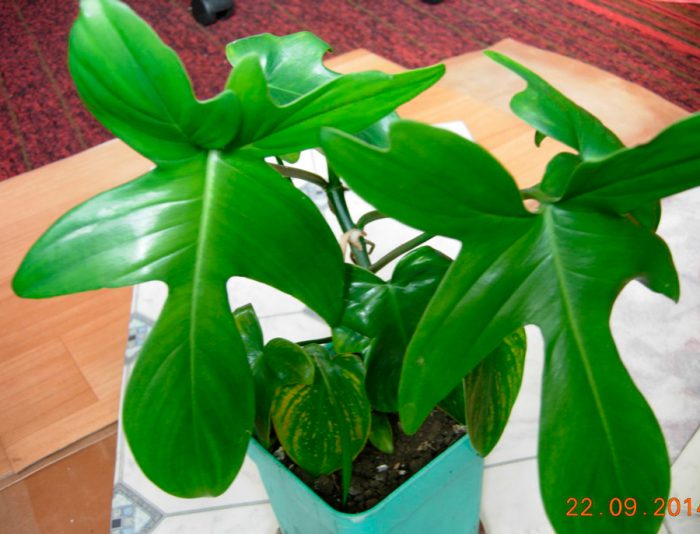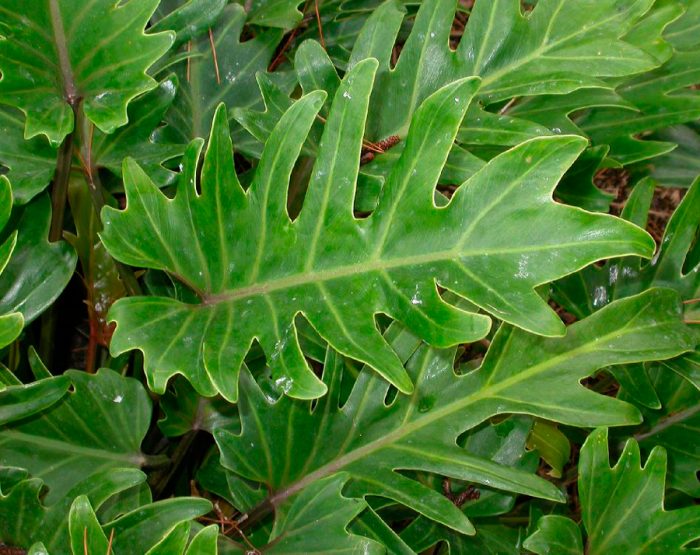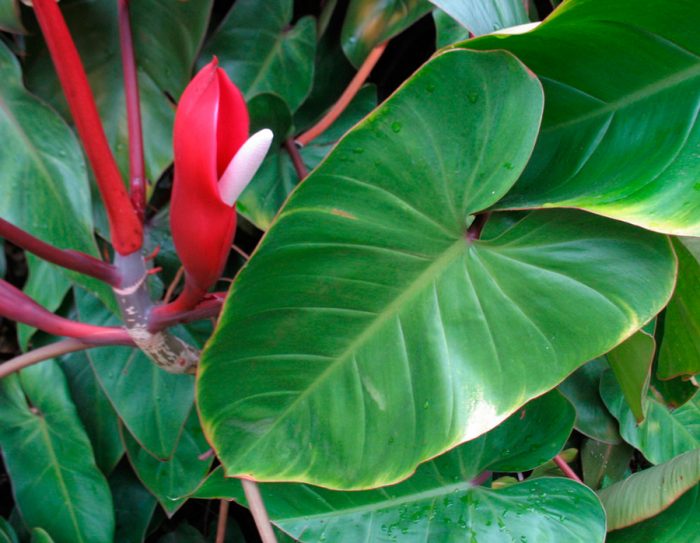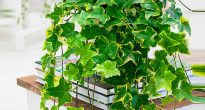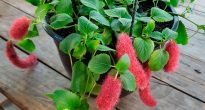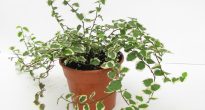Philodendron Is an evergreen flowering perennial plant from the Aroid family. Specialists at the Missouri Botanical Gardens have approximately 900 species of this plant. All of its representatives are not fully understood. Philodendrons are common in the tropical zone of America, Australia, and the Pacific islands. They prefer moist, warm forests, swamps, and river banks.
The name of the philodendron from the Greek language literally translates as “love tree". In its natural habitat, this plant cannot grow without the support of its own tree. Several types of philodendrons are grown indoors. Given the enormous size of an adult plant, this plant can only be grown by owners of large, spacious rooms. Philodendron bears some similarities to the monster.
Among the philodendrons there are epiphytes, semi-epiphytes, and hemiepiphytes. But there are more epiphytes, which use aerial roots to fix on the support. If there is no tree next to the plant, it will crawl with a whip along the ground behind the shadow of a tree or fence. Philodendron can have both underground and aerial roots. It uses numerous small, hairy aerial roots for support. With thick and long roots, he finishes his food and absorbs moisture.
The tropical plant has fleshy stems, which are woody at the base. The size of alternate petiolate leaves in some cases reaches two meters in length. Leaf plates can be oval, pinnately dissected, arrow-shaped. In some cases, the leaves of the same plant may vary in size and shape. As a rule, the leaves of a philodendron are colored in different colors, but the upper ones have a darker shade. The inflorescence is an ear with a two-colored waxy veil that looks like a hood. The fruit is a small berry.
Most of the plants that belong to the Aroid family are grown in greenhouses and conservatories. They will decorate large halls and lobbies. For a standard city apartment, the Climbing Philodendron is most suitable. This species does not need a lot of space for normal growth and development. It is grown in a hanging planter or basket like a common ampelous plant. In addition, it is shade-tolerant and unpretentious.
The warty Philodendron belongs to the compact species. It has beautiful decorative leaves. But he cannot grow without support. Philodendron Sello is considered no less attractive. Its height reaches 1.5 meters, and in width it can grow even more, since it has large leaves 80 cm long. The guitar-shaped Philodendron is very beautiful, the leaves of which resemble a famous musical instrument.
Caring for a philodendron at home
The rules for caring for philodendrons of different species are the same, despite the external differences and sizes.
Temperature
Philodendron is a thermophilic plant. It adapts perfectly to the summer heat if the room is kept at optimum humidity. The plant does not require special temperature conditions. It will feel most comfortable at a temperature of 20-25 ºC. Temperatures above 25 ºC in summer are undesirable. To prevent the philodendron from overheating, its leaves are sprayed and washed with settled water. In winter, the room temperature should not drop below 15 ºC. The plant does not tolerate drafts, so it is better not to take it outside.
Lighting
To make the philodendron lush and beautiful, you should choose the right place for it. Almost all species love the scattered rays of the sun. Avoid direct sunlight on the plant. Variegated plant forms require more light than monochromatic ones. Only Philodendron climbing and Philodendron blushing normally tolerate penumbra.
Watering
Philodendron needs to be watered regularly, especially during spring and summer. The plant is watered as the top layer of the earth dries up. The frequency of watering depends on the air temperature in the room where the plant is located. Excess water should not remain in the pan. It is poured out one hour after watering. In winter, water the plant very carefully. At low room temperatures, watering is reduced. Due to excessive watering, the philodendron will hurt, its leaves will turn yellow. It is also impossible to overdry the earthen lump. Due to drought, the philodendron will lose its attractiveness, it will shed its leaves. Water the plant with soft water (rain, boiled, settled). It should not contain lime impurities, so well water is not suitable for this purpose. Otherwise, streaks will remain on the leaves of the plant.
Bottle philodendron is watered less often. It belongs to succulents that accumulate moisture.
Air humidity
Under natural conditions, the philodendron grows in the tropics, therefore it needs high humidity. The plant must be sprayed regularly, especially during the heating season. If there is dry air in the room, the leaves of the plant will become small. Younger specimens will love the shower. To increase moisture, you can moisten a stick with coconut fibers, which serves as a support for the philodendron. Do not forget to wipe the leaves of the plant with a damp cloth. For spraying, use soft, warm water. This hygiene procedure not only improves the appearance of the philodendron, but also increases the humidity. It is better to refuse polishes for leaves, they may contain harmful substances.
Top dressing
In their natural habitat, philodendrons prefer animal excrement, insect waste products, rotted tree foliage and rainwater. Unfortunately, in room conditions, this cannot be provided to him. During the period of intensive growth, the philodendron will not refuse feeding. Fertilizers provide it with a range of nutrients. They are brought in from March to September. In other months, you can also feed the plants, but less often. Once a month is sufficient if the plant is in a warm room. For feeding, you can use complex mineral fertilizers. Fertilizers for decorative deciduous plants are also suitable. To make the philodendron stretch in height, fertilizers with a high nitrogen content are used. If it is important for the plant to be compact, it is limited to nitrogen fertilization.Do not forget that an excessive amount of fertilizer may turn yellow philodendron leaves.
Transfer
The philodendron is transplanted in the same way as other plants. Young specimens should be replanted every year, adults - as needed, approximately every 2-3 years. A cramped pot serves as a signal for transplanting. Each time it should be a little more spacious than the previous one. Because of the cramped pot, the philodendron will wither. Pretty mature plants can simply be hauled over and replaced with the topsoil. The tropical plant prefers nutritious, light, porous, slightly acidic, breathable soil. For growing philodendrons, you can use an earthen substrate for orchids, which includes charcoal, sphagnum moss, peat and bark. A soil mixture consisting of two parts of sod land, one part of peat land and humus, half part of sand is suitable. Older plants are grown in a different soil, made from equal parts of coniferous, leafy soil, sand and peat.
Reproduction
New Philodendron offspring can be obtained in several ways. It reproduces by seeds, cuttings, air layers, tops, leaves, trunk fragments.
Propagation by apical cuttings gives the best results. Even novice growers can use this method. The optimum temperature for breeding is 25-30 degrees. The process will accelerate in high humidity. To provide it, use a plastic bag or glass cap. Planted cuttings are thoroughly ventilated. First every other day, and then more often. It is also necessary to remove condensate that accumulates on the walls of the greenhouse. Wet sand is best for rooting. Periodically, in order to rejuvenate, it is necessary to rejuvenate the philodendron so that it branches, is lush and beautiful.
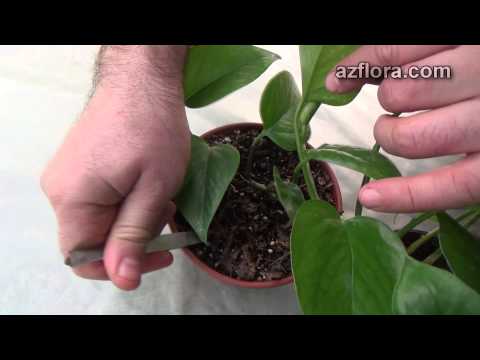

Watch this video on YouTube
Diseases
If the plant is looked after correctly, it will not be afraid of insect pests. With improper care, the philodendron is threatened by scale insects, thrips, spider mites.
Pests. In fact, this plant, with all the rules of maintenance and with proper care, is rarely exposed to pests. But it is quite realistic to expect scale insects, spider mites and thrips. I already wrote how to deal with them: here, here and here.
Philodendron is a poisonous plant. Its juice irritates the mucous membranes and skin. When caring for it, you must follow the precautions. It should not be touched with bare hands, it is better to use gloves. And after taking care of it, you should wash the instrument and hands well. For those who have small children and animals at home, it is better not to have this flower.
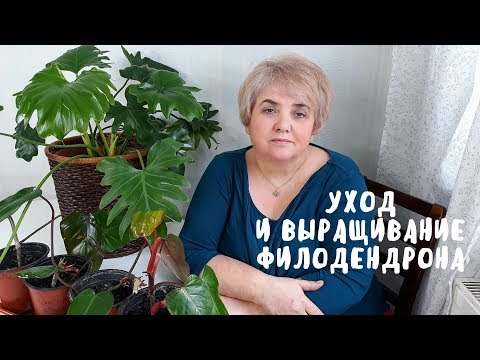

Watch this video on YouTube
Types of philodendrons with photos and names
Since there are too many philodendrons in both nature and culture, we will try to introduce you to the most famous and popular species and forms.
Philodendron golden-black Andre
Highly decorative appearance due to its heterophyllia (variegation): young leaves are small (5-7 cm long) - heart-shaped, copper-red, and adults reach 40 to 80 cm in length (in nature, of course), in shape - more oblong , color - bronze-green with whitish veins and a narrow light border along the edge. At home, he is picky about air humidity.
Philodendron brilliant
Small and compact vine. Stems are thin, leaves up to 10 cm in length and up to 5 cm in width, velvety, young - reddish, adults - brown-green. Unpretentious.
Philodendron warty
It is very popular with flower growers, because it is incredibly beautiful: heart-shaped velvet leaves 15-20 cm long and 10 cm wide grow on petioles, densely covered with warty bristles. The problem with the species is that it does not tolerate dry air well.
Philodendron Guitar
Also in demand in culture. Its leaves, in shape reminiscent of a famous musical instrument, reach 40-50 cm in length. The plant is not capricious and has already served as the basis for breeding several hybrids of high decorativeness.
Philodendron bipinnate
Despite the external similarity, which is misleading to many, these are two different types. They are large lianas with a powerful ligneous trunk. The bipinnate philodendron is very rare, and the Sello philodendron is widespread in culture.
Philodendron blushing
The most famous species among flower growers, which served as the basis for breeders who successfully bred many varieties with his participation. The trunk of the liana is red-green in color, with age, when it becomes woody, it turns into gray-golden. The leaf petioles at the base are dark red, the leaves are 25-30 cm long, 15-20 cm wide. The cover covering the fragrant ear of white is 15 cm long, dark purple. The plant is completely unpretentious, it tolerates rare watering, and poor lighting, and insufficient air humidity.
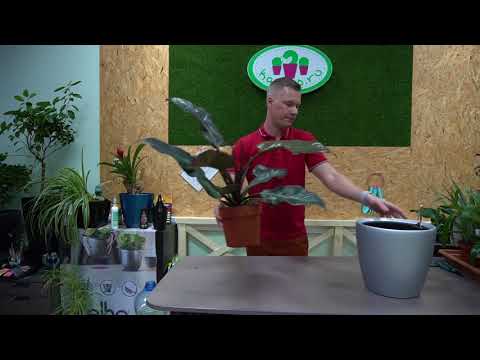

Watch this video on YouTube


